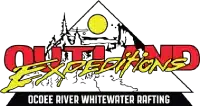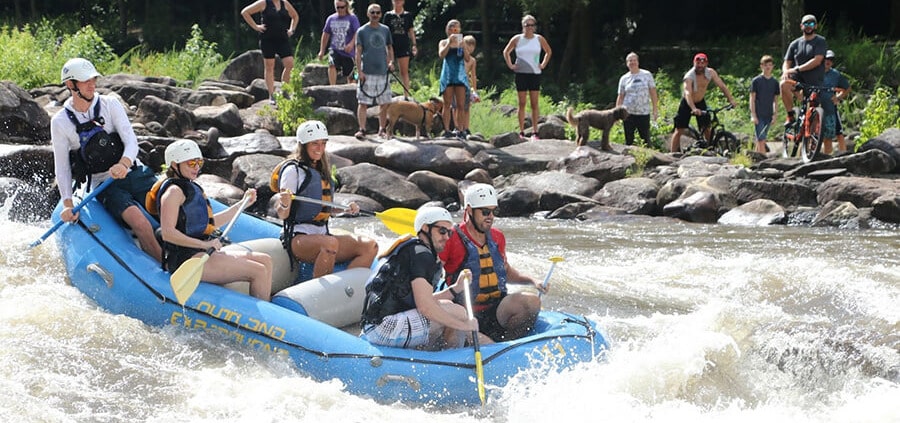Anatomy of the Raft
Do you know your thwart from your foot cup? Rafting expert Hamish McMaster of Water By Nature is here with a quick guide to the terminology used in and around your raft.
Knowing the anatomy of the raft will come in handy on your next rafting trip!
Stern Mount:
A metal frame which has either a seat or slanting board. This is where your guide sits with two large oars for guiding and maneuvering the raft through large rapids.
Foot Cup:
Normally a piece of fabric that you put one of your feet in to gain some stability in the raft. Paddlers need a strong position in the raft from which to propel the raft forward with their paddle. Using foot cups, thwarts and their paddle, guests are very stable and falling out is quite unlikely. Foot cups are generally placed only in the front of the raft.
Thwarts:
These are the cross tubes filled with air, which help give the raft it’s rigidity. This helps keep the boat relatively stiff to help to slide through gaps in rocks and to maintain its shape. Thwarts also assist the guests who are not sitting in the front of the raft to stay well placed to paddle by wedging their feet under the thwart in front of and behind them.
Paddle:
The paddle consists of 3 parts: the blade which goes in the water, the shaft which you hold onto, and the T grip, which you also hold onto.
PFD & Helmet:
These are your pieces of safety gear on the river. PFD stands for “Personal Flotation Device” and is a life jacket with a flap on the back that is designed to keep you floating. It has more flotation on the front than the back to orientate you naturally onto your back in the event you go for a swim. Helmets are worn to protect your head from hard items such as paddles, rocks, and even other people. Safety is paramount, and so considering the nature of our trips, we encourage guests to wear their safety gear at all times when in the vicinity of the river.
Outside Line (Grab Rope):
A sturdy rope that goes around the outside of the raft through a series of metal rings called D rings. This is a way for guests to ensure they stay in the raft when the guide calls “HOLD ON” as they drop into large rapids. Outside lines are safe, provided they are tight, and you’ll feel very glad that they are there!
Raft:
Let’s face it—without one of these, we’re all just swimmers. Rafts are traditionally made of very strong fabrics such as PVC, Hypalon, and urethane. They traditionally have 4 chambers filled with air, thwarts to help with rigidity, and an inflatable floor to allow water to run out via a pressure differential.
And last but not least, you (the guest!):
Though you may not technically be a piece of the anatomy of the raft, you are vital to the raft’s function! Guests holding onto their paddles and using correct maneuvering techniques allow us to challenge some of the best whitewater rapids in the world. You and your fellow paddlers are the motors in the raft and the guide is the driver.
Well, are you ready for the quiz now? Just kidding! But we do hope this lesson on the anatomy of the raft comes in handy during your next rafting trip!
BOOK YOUR RAFTING TRIP ON THE OCOEE RIVER WITH OUTLAND EXPEDITIONS, HERE!




